
|
|
|
13.1 INPUT ISSUES
������������Analog signals are more complicated to deal with than digital signals. This is primarily because electrical noise will degrade the quality of the signal quickly.
To deal with this there are a number of measures to be taken,
A simple shielding example is shown below. A shielded cable has a metal sheath. This sheath needs to be connected to the measuring device to allow induced currents to be drained. This prevents electromagnetic waves to induce voltages in the signal wires.
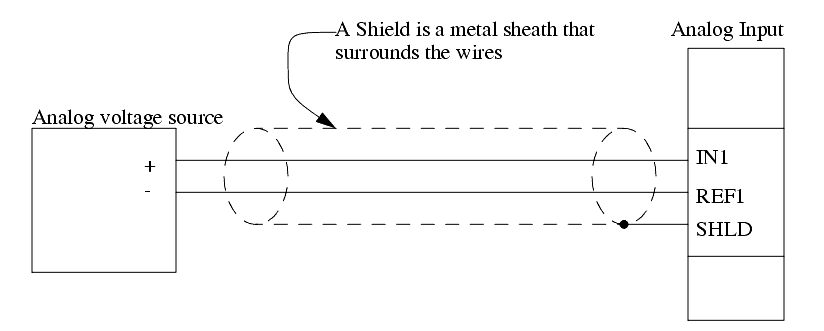
The common voltage for each analog signal may be the same but more often it is different. If the commons are tied together we have a single ended system. If each signal is given its own common the connections are double ended. Most analog input cards allow a choice between one or the other.
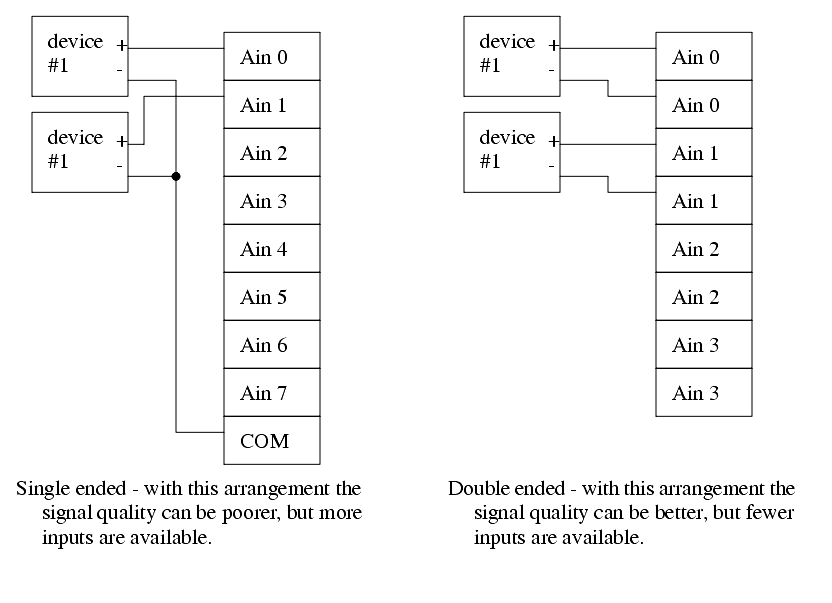
Signals from transducers are normally small and cannot be directly input into an analog input. To make these signals more usable Signal Conditioners are used.
Signal conditioners are normally amplifiers to increase the signal strength, but some will also change the signal (eg. conversion from current to voltage).
An example of a simple single ended amplifier is given below,
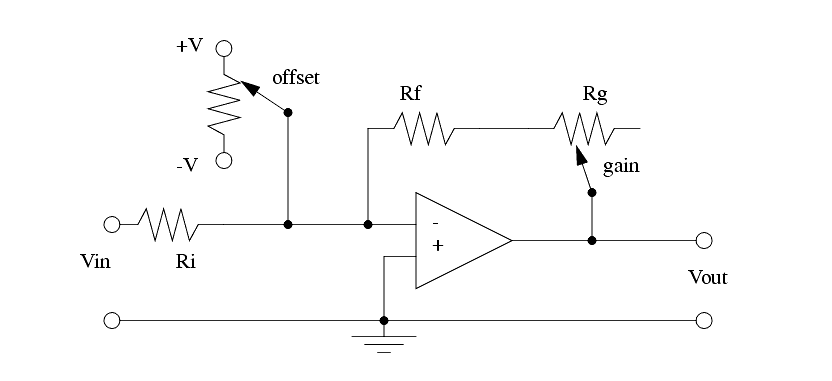
An example of a differential amplifier with a current input is given below. Note that Rc converts a current to a voltage.

An example of a differential to single ended amplifier is given below.
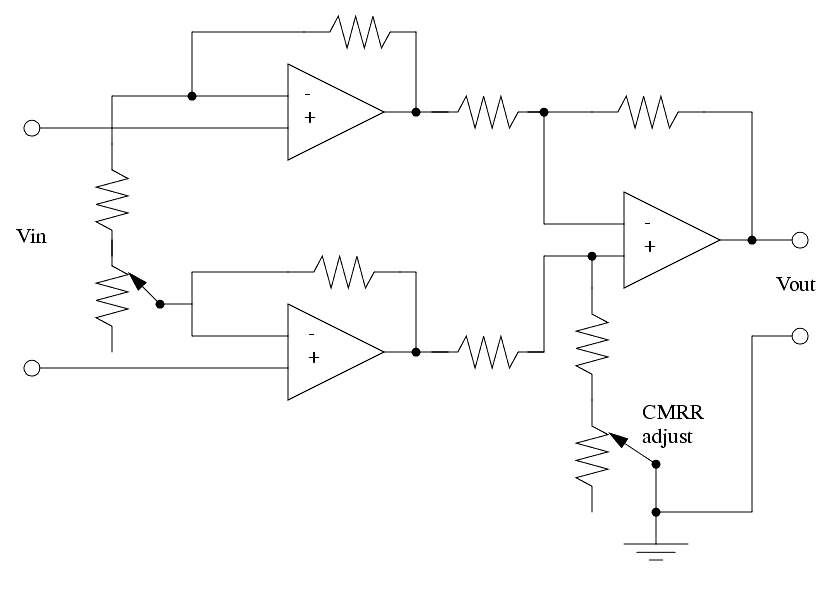
The circuit below can be used to amplify the output of a resistive device.
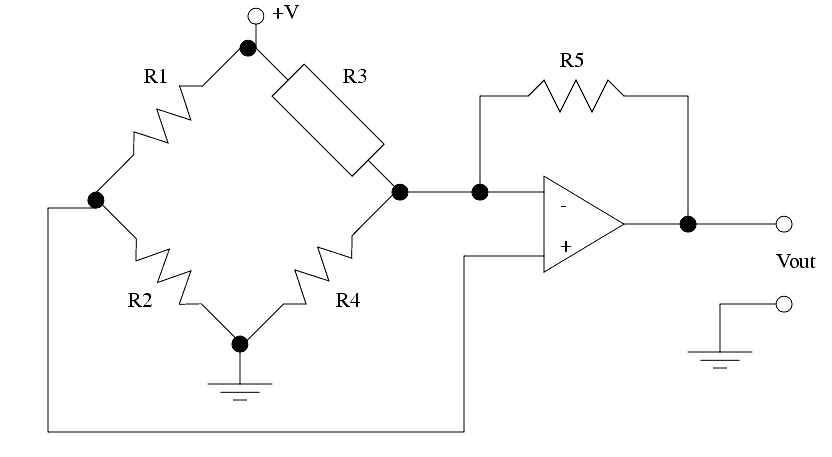
Search for More: |

Custom Search
|

|